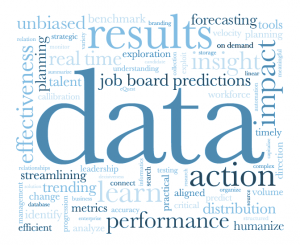 It seems that “Big Data” is all the buzz in technology circles these days — and for good reason. Big data has all the hallmarks of being the next “Big” thing. Big, because of the potential for “Big” rewards that can be reaped.
It seems that “Big Data” is all the buzz in technology circles these days — and for good reason. Big data has all the hallmarks of being the next “Big” thing. Big, because of the potential for “Big” rewards that can be reaped.
Companies must carefully review how they allocate their resources. Business leaders should consider any investment of time, money, and people in terms of its potential for advantage and financial rewards. As logical as the” Big Data” argument is, however, for most companies, attempting to scale those rapidly growing mountains of information is a daunting task. So much so, that they are choosing instead to continue their “business as usual” methods.
Unfortunately, the pursuit of becoming a data-driven enterprise is an evolutionary process. It often takes considerable time and resources before its value is realized. Hesitation, though, only allows the competition to gain an early advantage. And, ironically, jumping in later and playing catch-up with the competition will likely prove to be even more daunting.
Human Resources (HR) organizations typically have a similar difficulty becoming a data-driven organization. HR organizations have spent the better part of the last two decades simply trying to get their arms around their data. Numerous core HR systems spread across their divisions, bolt-on Talent Management systems , and external support vendors all have combined to make it a herculean effort to simply pull together basic HR reports and metrics – of which most are out of date by the time they are published.
Attempting to capture the speeding data coming at HR from today’s Internet-enabled and cloud-based activities only exacerbates the problem. Without timely, easy-to-understand, meaningful data on which to base decisions, HR has been forced to rely on hunches, guesses, and assumptions. Hardly the stuff that strategic business partner and trusted advisor relationships are built on.
Let’s take a very real business issue that HR must tackle on an everyday basis: “Developing effective Talent Acquisition strategies that align with its company’s overall business plan.” Instead of relying on hunches, guesses, and assumptions to make talent acquisition decisions, analytic review of the data can provide important insight as to where to place job ads to generate a higher volume of candidates. HR organizations that leverage “Big Data” technologies have a tremendous opportunity to efficiently mine those mountains of data. Herein lays a huge opportunity for HR leaders to strengthen their strategic position internally while helping their company achieve its business objectives.
Recently, eQuest announced that its “Big Data” program has increased its database to more than 1.1 billion job board data records — the most of any company in the HR industry. As the global leader in job-posting delivery and job board management services, eQuest is now leveraging its vast data acquisition capabilities to help our customers drive successful recruiting strategies — and ultimately demonstrate greater value through strategic, fact-based decision-making.
But how? What does “Big Data” really mean? And most important, how does it lead to more efficient, cost-effective, and targeted job postings that will improve your results?
Think about what you could do with 1.1 billion data records. For starters, this prized data yields real-time analysis for better job posting decision-making, informing the decision maker on how to post the right ads in the right place at the right time to attract a higher volume of candidates for your specific positions.
Armed with this valuable data — including job board, job classification, job title, job location, required skills, and other key data points — you gain a clearer understanding of candidate viewing and response habits to help you better target candidates.
“Big Data” analysis also leads to smarter online spending recommendations. Rather than guessing at where to post your jobs, you now have data-driven insight telling you exactly where and how you should be investing your money.
So if someone said you could extract wisdom to achieve better outcomes at a lower cost, wouldn’t you jump at the chance? That’s the power of more than 1.1 billion job board data records — real-time analytics that are timely, easy-to-use, and meaningful to your recruitment strategies.
While there are many factors contributing to your success, better candidate sourcing in the overall scheme of talent acquisition, based on data-driven decision-making, will lead to greater outcomes for your HR organization and overall business.
Contrary to another buzz conversation, we believe that our 1.1 billion records also reveal that job boards aren’t dead. Watch for a future post sharing my opinion on this.
One thought on “1.1 Billion Records — Now That’s “Big Data””